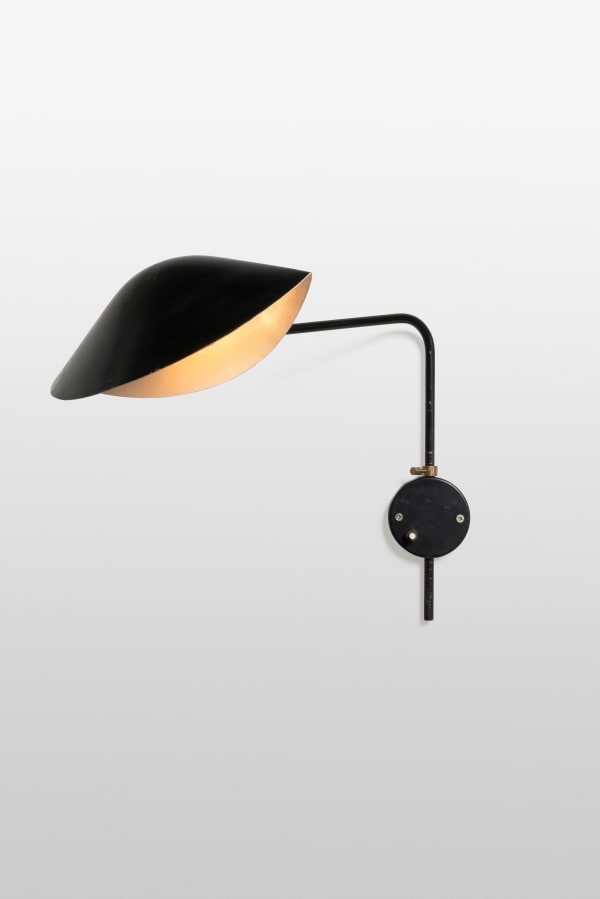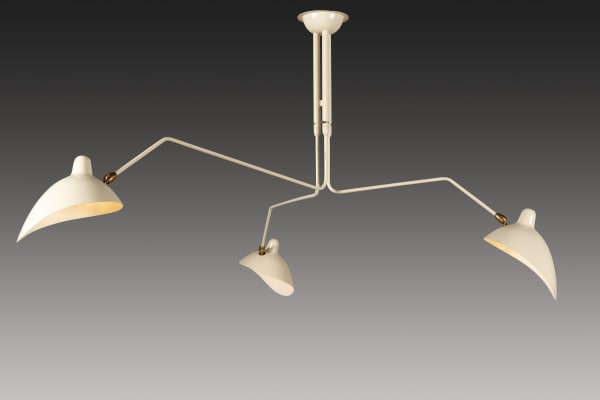Serge Mouille France, 1922-1988
Serge Mouille is often considered the most important lighting designer of the 1950s. Preoccupied with the beauty of natural forms and fascinated by their movement and function, he tackled the issues of the effective diffusion of light in domestic interiors, creating unusual and aesthetic, yet well functioning light fixtures. Mouille's work was a reaction against the Italian designs that were appearing at the time.
Having trained as a silversmith under Gilbert LaCroix, Mouille started his own business in 1945 creating silver pieces for clients both in France and abroad.
Whilst he had already begun his exploration into the potential shapes that can be created out of flattened metal, it was in 1953, when he created a revolutionary car body in Duralinox in collaboration with the decorator Slavic and the Sculptor J.P. Damat that his work on lighting fixtures began in earnest. This year Mouille was commissioned by Jacques Adnet to design a light for the Compagnie des Arts Français. He was given free reign on this project, with Adnet's only instructions being 'I want a big light because I have clients in South America who have huge rooms.' Mouille produced what was to become one of his classic designs - the 'Three-armed floor lamp.' From here he went on to modify his designs, creating a wide range of variations on this the original with multiple arms and shell-like shades, incorporating these elements not only into free-standing lamps, but also into ceiling-lamps and wall sconces.
Throughout the course of his successful career Mouille worked with numerous architects and designers such as Jean Prouvé, Paule Marrot and Jean Perrault, among others. He also received commissions from many famous individuals, such as the opera singer Jeanne Héricault, the painter Hartung, the actors Henry Fonda and Gérard Philippe, as well as Christian Dior. In 1961 Mouille established the Société de Création de Modèles with the intention of encouraging the careers of young emerging lighting designers. Three years later, at what could be seen as the peak of his career, he ceased to create new designs, devoting himself almost entirely to teaching and research.






